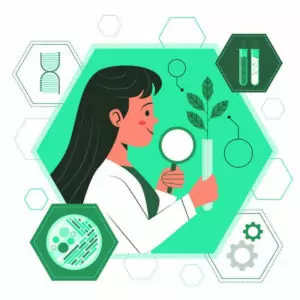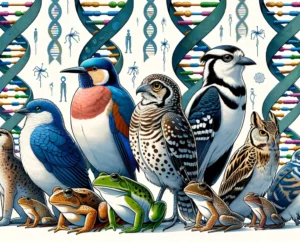In the world of biology, the Central Dogma stands as a foundational concept that illuminates the flow of genetic information within living organisms. This concept, proposed by Francis Crick in 1958, plays a pivotal role in understanding how instructions encoded in DNA give rise to the proteins that define life. In this article, we will explore the Central Dogma of biology, dissecting its key components and shedding light on its significance.

✅ AI Essay Writer ✅ AI Detector ✅ Plagchecker ✅ Paraphraser
✅ Summarizer ✅ Citation Generator
The Central Dogma is essentially the core principle that governs how genetic information is transferred and translated in living cells. To grasp this concept, let’s delve into its fundamental elements:
DNA: The Blueprint of Life
At the heart of the Central Dogma is DNA, or deoxyribonucleic acid. This long molecule serves as the blueprint for all living organisms, containing the instructions necessary for building the proteins that drive cellular functions. DNA, like a recipe book, holds the key to creating the proteins essential for our growth, development, and overall health.
Transcription: DNA to RNA
The first step in the Central Dogma is transcription, during which the information within the DNA is transcribed into a portable messenger molecule known as RNA. This process allows for the conversion of the genetic code into a format that can be transported from the cell nucleus to other cellular machinery, like the ribosomes. The primary keywords here are DNA, RNA, and gene expression.
Translation: RNA to Proteins
Once the genetic information has been transcribed into RNA, the next stage in the Central Dogma is translation. In this phase, the RNA messages travel to the ribosomes, which act as cellular factories. At the ribosomes, the RNA code is read, and specific proteins are synthesized. This process is pivotal in bringing the genetic instructions to life.
The Central Dogma in Action
Imagine the Central Dogma as a well-orchestrated symphony within the cell. The central dogma suggests that DNA contains the information needed to make all our proteins, and RNA acts as the messenger that ferries this information to the ribosomes, where the proteins are synthesized. This pattern of information flow, from existing DNA to make new DNA (DNA replication), from DNA to make new RNA (transcription), and from RNA to make new proteins (translation), underpins the vitality of life.
Beyond the Central Dogma
While the Central Dogma provides a robust framework for understanding genetic information flow, modern research has unveiled intriguing exceptions. For instance, the concept of non-coding RNA challenges the conventional dogma. Non-coding RNA, though not following the central dogma’s linear flow, still plays a significant functional role within the cell. This evolving area of study underscores the dynamic nature of biological processes.
Real-World Applications
The Central Dogma of biology isn’t confined to the laboratory or textbooks. It has practical implications in various fields. Understanding this fundamental concept is crucial in genetics, molecular biology, and biotechnology. Researchers, armed with this knowledge, delve into genetic engineering, pharmaceuticals, and disease diagnostics.
Conclusion
In conclusion, the Central Dogma of biology is the cornerstone principle that elucidates the flow of genetic information from DNA to RNA to proteins. This concept, embodied in the keywords DNA, RNA, proteins, and gene expression, unveils the intricacies of life’s molecular machinery. While it remains a fundamental paradigm, biology continually evolves, revealing exceptions like non-coding RNA. As we explore the depths of genetic science, the Central Dogma remains an enduring guide, steering us through the remarkable complexities of life’s blueprint.
FAQ
Follow us on Reddit for more insights and updates.





Comments (0)
Welcome to A*Help comments!
We’re all about debate and discussion at A*Help.
We value the diverse opinions of users, so you may find points of view that you don’t agree with. And that’s cool. However, there are certain things we’re not OK with: attempts to manipulate our data in any way, for example, or the posting of discriminative, offensive, hateful, or disparaging material.